#Sir Peter Horsley
Explore tagged Tumblr posts
Text
youtube
Ancient Aliens: Prince Philip's Secret UFO Investigation (Season 18)
18 February 2022
Ancient Astronaut Theorists believe that Prince Philip might've investigated and researched a classified UFO phenomenon in this clip from Season 18, "The World on Alert."
#Youtube#Queen Elizabeth II#Prince Philip#Duke of Edinburgh#British Royal Family#Prince Louis of Battenberg#Lord Mountbatten#Sir Peter Horsley#Lord Louis Mountbatten#ufo#ufo sightings#Ancient Aliens#History Channel#ancient astronaut theorists
0 notes
Text
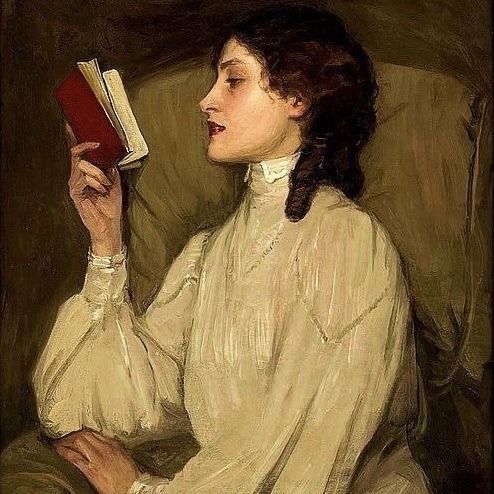

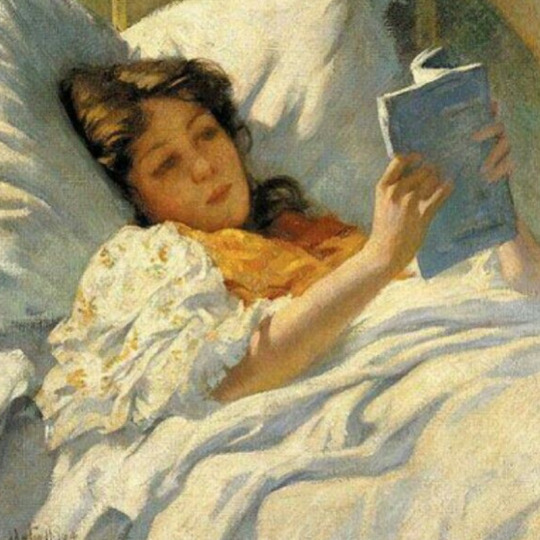

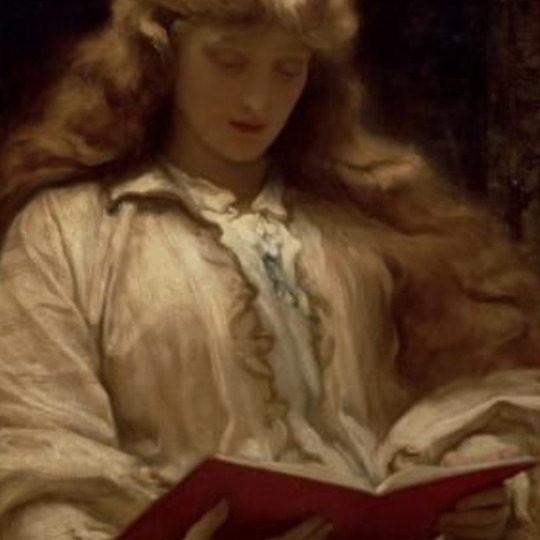
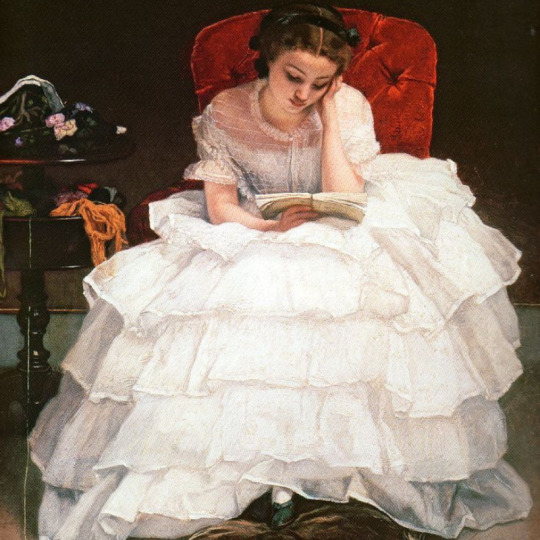
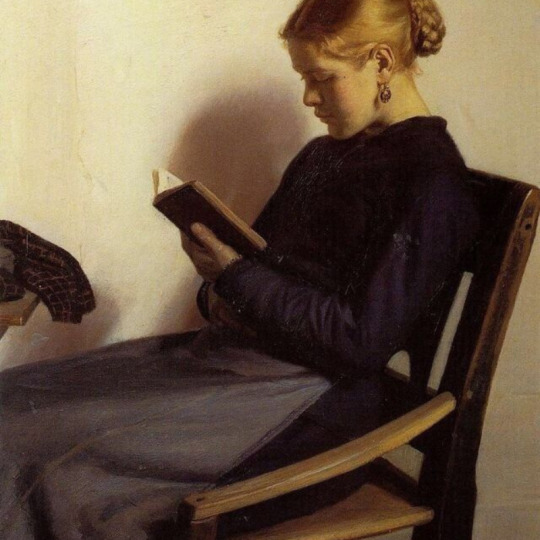
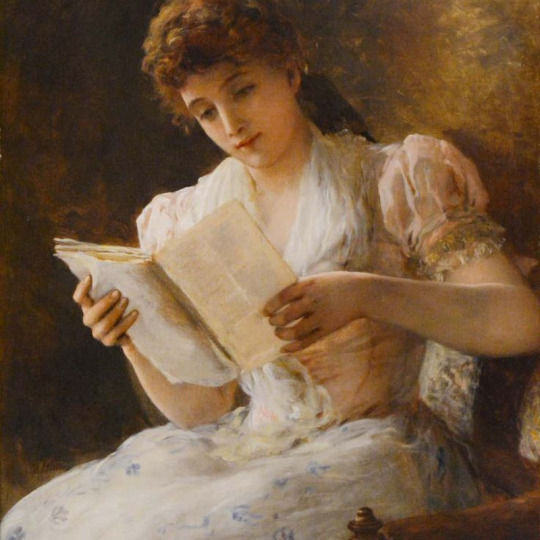


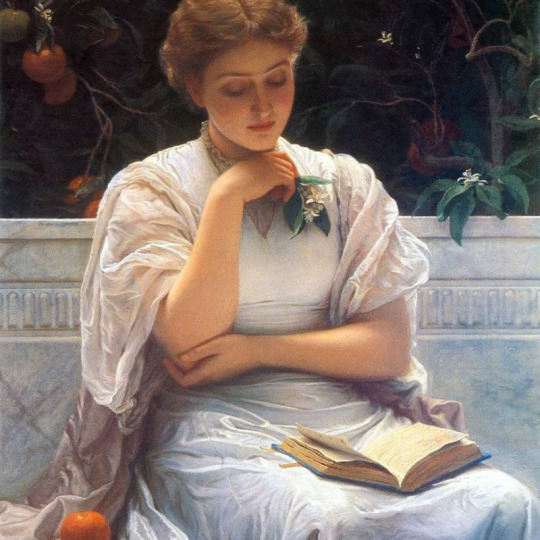
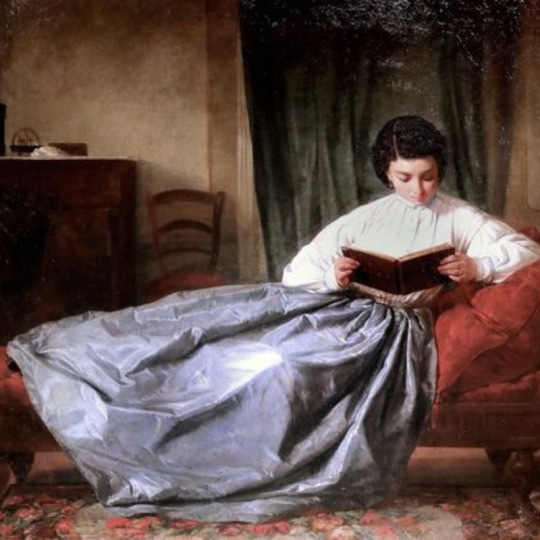

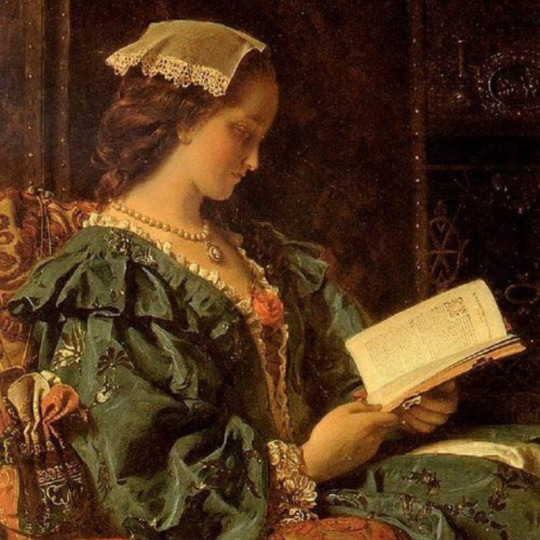

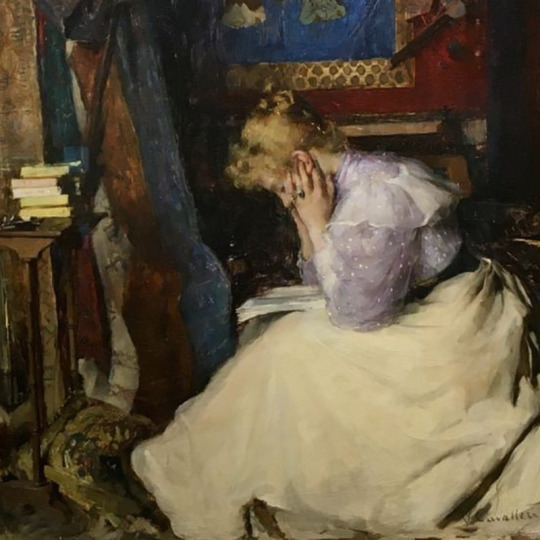

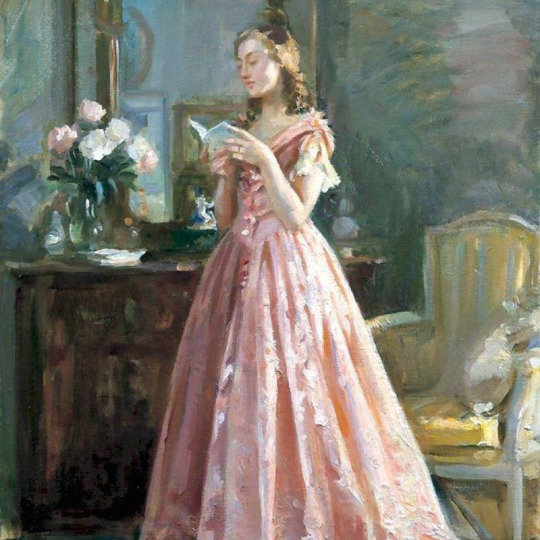
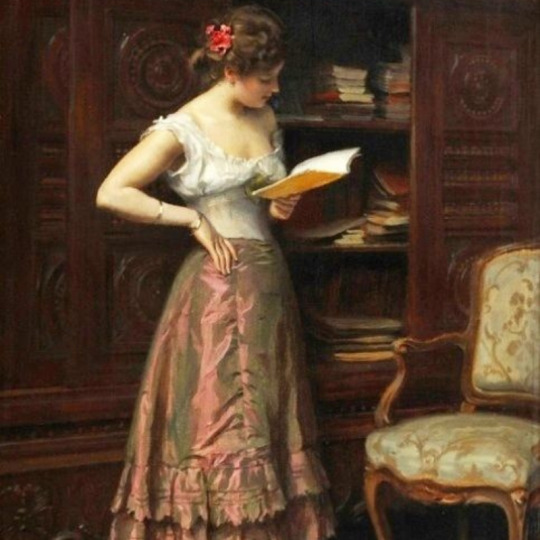
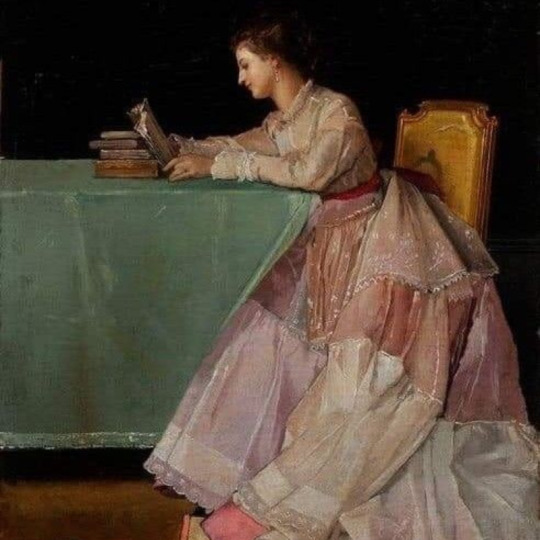
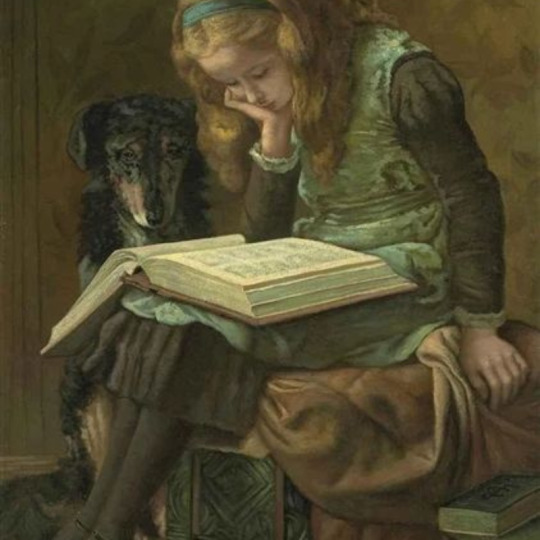
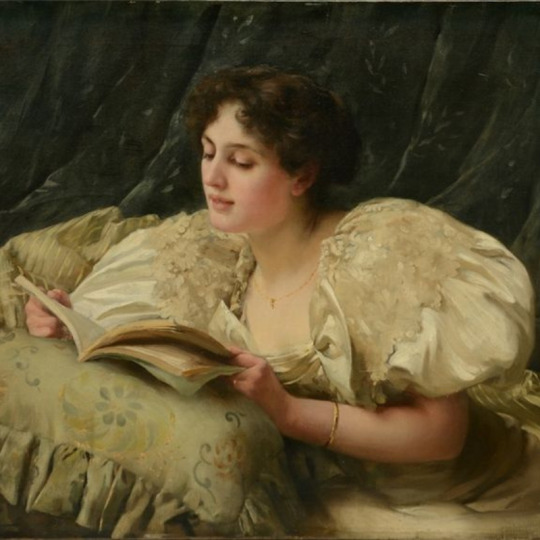

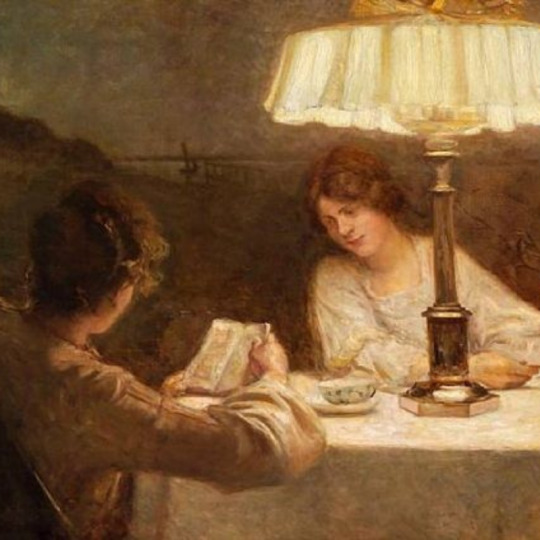
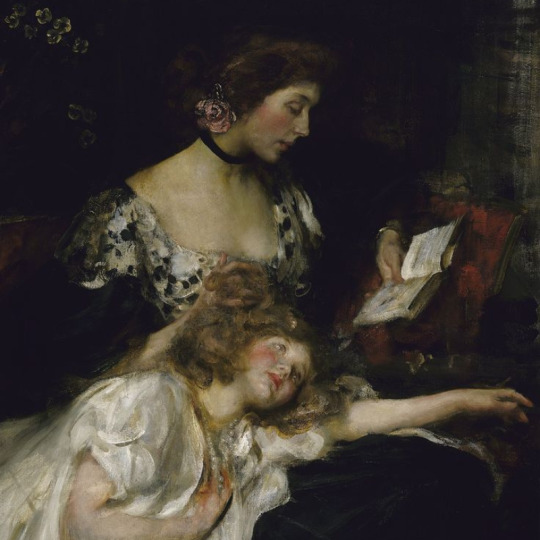
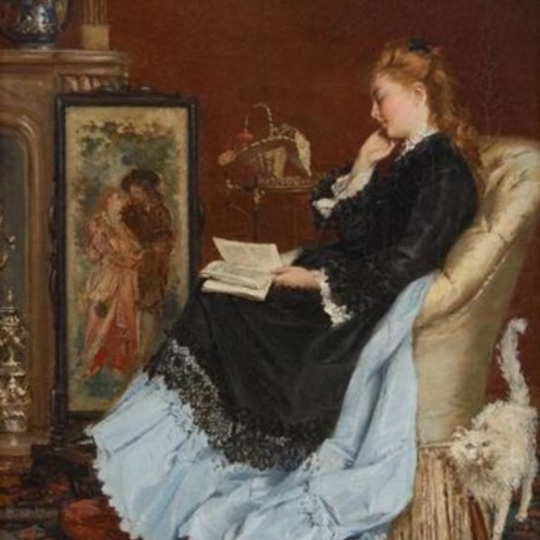

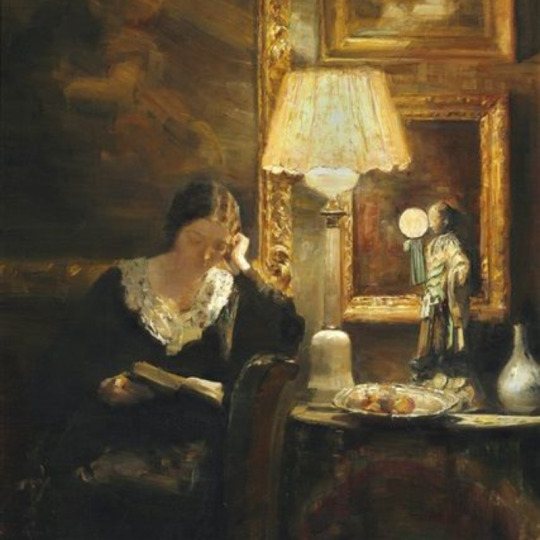
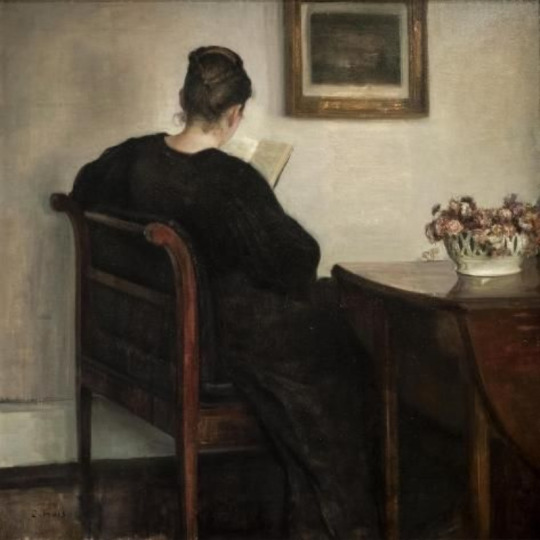
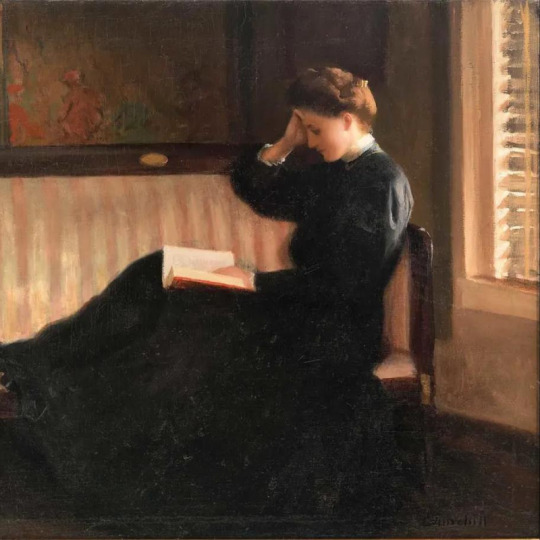
reading + art
#sir john lavery's “miss aura's the red book”#cant find artist or painting name#artist is willard leroy#artist is frederick morgan#the maid with golden hair by frederic lord leighton#girl reading by alfred emile stevens#young girl reading by michael peter ancher#woman reading book by william oliver#a pleasant corner by john callcott horsley#woman reading by jacques-emile blanche#in the orangery by charles edward perugini#artist is joseph duran#girl with pigtails by samuel henry willam llewllyn#the love tale by francis john wyburd#lady sirling maxwell by james guthrie#artist is roma ribera#a lady reading a book by albert chevallier tayler#artist is wilfred gabriel de glehn#woman reading standing by frederic dufaux#artist is jules-adolphe goupil#view reading by charles james#cant find artist or painting#young girl reading by jean-honore fragonard#artist is christian valdemar clausen#mother and child by james jebusa shannon#artist is albert roosenboom#lady with a book in a garden by frantisek dvorak#aften by carl vilhelm holsoe#reading woman by carl holsoe#woman reading on a sette by william w churchill
3K notes
·
View notes
Text
Janus: a entidade extraterrestre que conversou com piloto britânico
Janus: a entidade extraterrestre que conversou com piloto britânico

Sir Peter Horsley, piloto britânico que teria conversado com alienígena.
A maioria dos “contatos” com OVNIs são limitados à observação de objetos misteriosos no céu. Poucos casos documentados falam de seus passageiros e muito menos de comunicação com eles.
Ao revisarmos relatos de avistamentos de OVNIs, tomamos conhecimento de várias coisas: uma é que os avistamentos são muito mais antigos…
View On WordPress
2 notes
·
View notes
Text
"THIRTEEN AT DINNER" (1985) Review

"THIRTEEN AT DINNER" (1985) Review In the late 1970s and early 1980s, Peter Ustinov starred in theatrical adaptations of two Agatha Christie novels that featured her Belgian protagonist, detective Hercule Poirot. Three years after the second film, CBS Television hired him to star in three television movies featuring the Poirot character. The first one was the second adaptation of Christie's 1933 novel, "Lord Edgeware Dies".
Actually, the 1933 novel was published in the United States under a different title. And the 1985 television adaptation aired on CBS under that second title as "THIRTEEN AT DINNER". After appearing as a guest on a television talk show, Belgian-born detective Hercule Poirot is recruited by a famous American actress named Jane Wilkinson to convince her estranged husband, Lord Edgeware, to give her a divorce, for she has plans to marry the Duke of Merton. To Poirot's surprise, Lord Edgeware informs the former that he had already agreed to end his marriage to the American-born actress in a letter. However, Jane denies ever receiving it. The following evening, Lord Edgeware is murdered at his home. Scotland Yard's Chief Inspector Japp immediately suspects Jane of the murder. However, both Poirot and Japp discovers that the actress had attended a dinner party held by Sir Montague Corner on the night of the murder. This leaves Poirot, his friend Arthur Hastings and Japp to discover who had a reason to kill Lord Edgeware . . . or frame Jane Wilkinson for murder. "THIRTEEN AT DINNER" was the first adaptation of Christie's 1933 novel that I had ever seen. However, I had also seen the 2000 adaptation from ITV's "AGATHA CHRISTIE'S POIROT" and wrote a review of it. If I must be honest, I found the 2000 television movie mildly enjoyable, but unremarkable. And if I must be honest, I could say the same about this adaptation. Considering that this adaptation was set during the time it was made - namely the mid-1980s. There were a few updates in the story to adhere to its late 20th century setting - which included making both Jane Wilkinson and a fellow actor, Bryan Martin, movie actors. Otherwise, Rod Browning's teleplay more or less followed Christie's novel. What I disliked about "THIRTEEN AT DINNER"? I had one major problem. Thanks to Rod Browning's screenplay, I found it rather easy to guess who was killer after the third victim, another actor named Donald Ross, was murdered. One would have to be an idiot not to figure it out. What I liked about "THIRTEEN AT DINNER"? Well . . . despite the new time setting, the movie managed to be more or less faithful to Christie's novel. I found some of the humor rather sharp, especially between Poirot and Hastings. I rather liked John Addison's theme for Poirot. I found it rather quirky and easy to remember. More importantly, I thought the characterizations featured in the film rather strong. And the film's photography remained rather sharp after thirty-five years, thanks to Curtis Clark. What I liked best about "THIRTEEN AT DINNER" were the performances. I really enjoyed Peter Ustinov's portrayal of Hercule Poirot in this film. His Poirot seemed even more witty and sharp-tongued than he was in movies like "DEATH ON THE NILE" and "EVIL UNDER THE SUN". Although Jonathan Cecil looked like the typical English twit, his version of Arthur Hastings seemed a bit more clear-headed. And there were a few moments in which Cecil's Hastings briefly engaged in little witty repartees with Ustinov's Poirot. I rather enjoyed it. Faye Dunaway seemed to be enjoying herself in the dual roles of prime suspect Jane Wilkinson, Lady Edgeware and impersonator Carlotta Adams. I found her performance very charming and energetic. Either that or she was simply giving her usual 100% into the roles. Although Lee Horsley has appeared in more prestigious movie and television productions, I have to admit that I found his role as action star Bryan Martin in this teleplay to be one of his most interesting and best performances. Superficially, Horsley portrayed the actor as an easy-going and charming star. But with subtle skill, Horsley conveyed Bryan Martin as an over-weening and vindictive egotist. Another interesting performance came from a much younger Bill Nighy, who portrayed Lord Edgeware's weak-willed heir, Ronald Marsh. I enjoyed Nighy's performance very much and found myself wishing that his role had been slightly bigger. David Suchet, who would begin a twenty-three year stint as Hercule Poirot in ITV's "AGATHA CHRISTIE'S POIROT" four years after this production, portrayed none other than Chief Inspector Japp in this film. He gave a funny and sharp performance as Japp; and I found his interactions with Ustinov very entertaining. Suchet considered this performance as one of his worst. I do not agree. I suspect Ustinov felt the same, for he had suggested that Suchet should consider portraying Poirot in the future. "THIRTEEN AT DINNER" also featured solid performances from Amanda Pays, Diane Keen, Glyn Baker, John Barron, Geoffrey Rose, Pamela Salem; Benedict Taylor, whose portrayal of actor (he was a writer in Christie's novel) Donald Ross struck me as rather intelligent; and Allan Cuthbertson, who gave a very entertaining performance as the "friendly", yet competitive and egotistical Sir Montague Corner. I might a well be frank. I did not find the narrative for "THIRTEEN AT DINNER" particularly exceptional, but it was pretty solid. In fact, I could say the same about the 1933 novel and the 2000 television adaptation. What did strike me as exceptional was the cast. The movie did feature a very entertaining cast led by the always superb Peter Ustinov as Hercule Poirot and Faye Dunaway.

#agatha christie#thirteen at dinner#lord edgeware dies#thirteen at dinner 1985#peter ustinov#hercule poirot#jonathan cecil#arthur hastings#faye dunaway#lee horsley#bill nighy#amanda pays#david suchet#chief inspector japp#benedict taylor#allan cuthbertson#pamela salem#diane keen#glyn baker#john barron#geoffrey rose
4 notes
·
View notes
Text
hiiii
ive been getting back into the writing groove by writing small drabbles and little one shots here and there - but @owo-uwu-begonethot gave me this prompt and i wrote a little something for it and it actually came out reall well !! its a 5 +1, but its not that long i swear.
i wasn’t sure if i should post it on AO3 so we’ll see
enjoy ^^
5 Times Peter Asked For A Hug and 1 Time He Didn’t Have To
1. Tony Stark
“Sad” wasn’t a word one would usually use to describe Peter Parker.
Peter Parker was an optimistic, always-smiling kid who always went above and beyond for the people he loved - he was rarely upset. He was like a breath of fresh air to all the people in the compound because he would never, ever let a rainy day ruin the mood. A simply smile went a long way - Tony had noticed this with his time with Peter.
But sometimes he forgot that Peter was just a kid - a kid who had been through way too much for his age. A kid who needed comfort too.
And that fact hit Tony square in the face when the kid - his kid - walks into the living room with his eyes red-rimmed and tear tracks on his cheeks. Tony couldn’t do anything more than watch as Peter stumbled over to him, his head down and his breaths jumpy and shaky.
“...Kid?” Tony spoke cautiously, as if talking to a wild animal. He waited patiently for a response, watching as Peter wiped his eyes and looked up, but didn’t meet Tony’s eyes.
“C… can I please have a hug?” The teenager asked horsley, and Tony freezed up a bit.
He… never really ‘did’ hugs. Tony had never received a lot of hugs when he was a child, so he just grew up thinking that he didn’t really need to hug. Besides the occasional hugs from Pepper, he wouldn’t let anyone else hug him.
But…
Seeing Peter - the kid he had sworn to protect - crying and asking for something he wouldn’t normally ask for, and looking so upset…
Tony bit back a sigh and opened his arms, his heart cracking just a little bit as a choked sob made its way out of Peter’s throat. The teenager then tucked himself into Tony, wrapping his arms around the man as he hugged back.
“Damn, kid… you’re making me go soft.” Tony whispered jokingly, smiling a little when a small laugh sounded from Peter. After that, he went silent, nothing making noise aside from the small sniffles and sobs from the boy. Tony began to card his fingers through Peter’s hair, hoping it would bring some kind of comfort to him, and bit back a laugh when Peter seemed to melt into him more.
Tony would find out what was bothering him later. For now, he would just stay here like this, with his kid, giving Peter the comfort he needed.
And that was enough.
2. Steve Rogers
Steve found Peter in the training room at 3 in the morning, hitting a punching bag with all the force he could muster. From the distance, Steve thought he was just training (but why would he be up at this hour??), but as he got closer, he could see the tears that were running down Peter’s cheeks. With a small cry (of rage?? Sorrow?? Steve couldn’t tell.), Peter landed a hard blow on the punching bag and sent it flying across the room.
Peter heaved in breaths as he stood in the middle of the room, looking so impossibly small and sad. Steve couldn’t just stand there and do nothing, so he cleared his throat and stood a little straighter, calling out to the boy softly.
“Peter-” He stopped when Peter whipped his head around, clearly alarmed. “...hey. What are you doing up so late?” Steve managed to soften his voice a little more in an effort to calm Peter down - make him realize that he was in no immediate danger.
“Heh. Hi Mister Captain America Steve Rogers, sir.” Peter wiped his eyes in a vain attempt to hide the tears. “I just couldn’t sleep. I guess that’s why you’re down here, too?”
“...you’re right.” Steve smiled, albeit awkwardly and weakly, and moved to take a couple of steps forward. “But you’re a growing boy, you know. You need sleep.”
“...You sound like Tony.” Peter mumbled, and even though there was a smile on his face, it didn’t quite reach his eyes. Steve suppressed a small sigh and put his hand on Peter’s shoulder, internally wincing when the teenager flinched a tiny bit.
“...What’s bothering you, Peter?” Steve asked softly, not expecting the second wave of fresh tears that had suddenly washed over Peter. Peter sniffled, and the next words that came out of his mouth really caught Steve off-guard.
“...Can I please have a hug?” Peter whimpered, scrubbing at his face rather harshly.
Steve would be damned if he didn’t give this kid a hug.
And the fact that the boy was so small caught up to him when Peter got swallowing up by Steve’s arms, practically disappearing when he melted into the hug.
3. Natasha
Natasha didn’t exactly do… emotions.
(Well - that was one way to put it.)
Being trained and brought up as an assassin, Natasha was always taught that you had to suppress your feelings in order to get through a mission - nothing could stop you from getting to the goal that you set and that you had.
However, ever since moving in with the only family she’d ever had, she was beginning to open up more - she was beginning to learn how to express herself more.
And that all started with a little someone name Peter Parker who also happened to be a spider.
(That was the first thing he had said to her after he got over his initial shock - ‘hey! We’re both spiders! Isn’t that cool?!’)
Natasha had found the boy sniffling to himself in the kitchen as he grabbed a cup with shaking hands from the cabinet above him. The Black Widow found herself frowning as she walked into the kitchen casually, not really sure how to attack this problem, but determined to nonetheless.
“Hey, Parker.” She said lowly, and Peter jumped in surprise. He blinked, his eyes shining with unshed tears.
“O-oh! Hello, Miss Black Widow Natasha, m’am. Miss.” He said quickly, blinking rapidly as if to stop his tears from spilling over. She offered him a small smile and reached for a cup herself, trying to remain casual. Maybe if they just talked, he would feel better? Clint would just talk to her when she felt a bit… down. Maybe this would work for Peter?
“What drink are you going to get? I was thinking a cup of water for myself.” Natasha said, albeit awkwardly, walking over to the refrigerator to fill her cup.
“...I-I was actually just going to get some apple juice,” Peter replied from behind her, his voice all shaky and wobbly. Natasha frowned once more and turned around to face the teenager who wouldn’t even look her in the eye.
“...what’s the matter, Peter?”
There was a small period of silence where none of them said anything, the only noise being Natasha slowly putting her cup down on the counter. Should she have gone for the direct approach? That was a bad idea, it see-
“...Can I please have a hug, Miss Natasha?” Peter asked weakly, finally looking at her in the eyes.
A hug? Natasha wasn’t sure if she was the most qualified for a hug, but… when she looked at Peter, a surge of… protectiveness (??) swelled in her chest. He was always so… bright and happy. It was time for someone to make him feel safe.
So, she smiled. “Of course, Peter.”
She wrapped her arms around him gently, giving him room to step back if need be. After a couple of seconds of sniffles, she whispered quietly, “I got you, паук.”
And even thought Peter probably didn’t know what that meant, it made him cry even harder.
4. Bruce
Bruce had never met anyone who had been excited to see him for him and not the Hulk.
And yet, when he first met Peter Parker, the boy had almost thrown up with excitement.
Peter was a science nerd, it was obvious, and went on and on about how he had read all of Bruce’s lab reports and papers on every single research topic he did, and how he used them for multiple school assignments.
Peter was busy with school a lot (God knows how he kept up with both school and Spider-Man), which was why Bruce wasn’t very surprised when he found Peter on the floor of the labs with multiple papers scattered around him. What he was surprised about, though, was the constant flow of tears that made their way down Peter’s face.
“Peter!’ Bruce couldn’t stop himself before he exclaimed the boy’s name, causing Peter to whip around, his eyes wide and his lip quivering. Bruce realized his error almost immediately.
“O-oh, Doctor Banner, I’m sorry, I’ll get out of your hair right now I promise let me just pick up all of your papers-” Peter said, panicked as he scrambled to pick up all of his papers.
“No, no, no, Peter, don’t-” Bruce quickly made his way over to stop Peter, letting out a small sigh when he managed to stop the boy. “I’m fine with you staying here. But what’s the matter? Is it something in your homework?”
Peter shook his head and let all his papers fly to the floor, looking down at his feet. He opened his mouth, closed it again, shuddered and wrapped his arms around himself. “...Can I have a hug? Please?” He asked quickly, as if he was ashamed of of the question.
“...Of course, Peter.” Bruce didn’t even hesitate - Peter had shown such kindness to him. There was no way he was just going to leave Peter hanging to dry by himself.
Peter let out a small, soft sob and allowed himself to be enveloped in a hug from the Doctor, relaxing when Bruce began to shush him and rub his back.
“It’s okay… it’s okay…”
5. Clint
“Hey, Spider-Child, I’ve been looking all over for - you…” Clint’s cheery hop-in from the vents into the living room was stopped abruptly when he caught sight of the teenager, laying in the fetal position on the couch and crying silently.
Clint was at a loss. He wasn’t sure whether he should just turn like nothing ever happened (it would spare Parker the ‘embarrassment’ of having someone see him cry), or he could stay and try to comfort the boy.
The parent in him pushed the first option away immediately. He couldn’t abandon a crying child and leave them all alone - whenever there was someone crying, comforting had to be done, and Clint wasn’t about to just hightail it out of there to give Peter privacy.
They were a team - and team sticks together like glue.
Like a family.
“Oh, shhhhhooot, Parker.” Clint winced at himself - winced at how phony and awkward he sounded. He cleared his throat and tried again. “Hey Peter, bud - want to talk about it?” He sat on the edge of the couch, close enough so that he could see Peter, but far enough that if Peter wanted to sit up, or get up to leave, he could do so.
Peter remained silent, so Clint just kept on talking. “I know times can get tough, bud, but you have to come to talk to one of us when you do. We’re here for you. And I know it’s hard to adapt to that, but you really have to understand that. You can’t just bottle things up and hope they’ll go away - and we’ll talk to you. I’m always available! I’ll show you my secret place in the vents!” He lowered his voice at the last part, smiling when Peter gave a small, watery laugh. Clint’s smiled softened as he reached over and rested his hand on Peter’s shoulder. “Do you need anything?”
There was a small moment of silence before the question was asked: “Can I please have a hug?”
Without skipping a beat, Clint replied: “Of course, bud. Sit up, though. I don’t want to lay on you and crush you for a hug.”
(Clint was 99% sure Peter could hear the swell of happiness in his chest when Peter laughed in reply and allowed the archer’s arms to encircle him.)
+1. Thor
“Ah! If it isn’t the Man of Spiders!” Thor’s voice boomed and echoed through the hallway as electric eyes settled on the small figure walking down the hallway. This ‘small figure’ seemed to flinch a little bit, but Thor carried on, passing it off as the initial shock of hearing his loud voice. “Tell me, spiderling - how has your day been? Care to sit on the couch with me and watch The Show of Friends? Tony tells me that it is very funny!”
There was a small passing moment of silence, and Thor was about to repeat himself, but a small voice stopped him from doing so.
“...w-with all due respect, Mister Thor,” Peter’s voice sounded… weird. Like he was trying to hold back a sob. “No thank you. M-maybe another time?” The teenager still hadn’t turned around, much to Thor’s dismay.
And Thor knew that something was 100% wrong.
“...Talk to me, Man of Spiders. Perhaps we could chat about what ails you over a nice cup of tea or hot chocolate. Trust me, keeping things to yourself is never the answer!” Thor jogged so that he was right behind Peter with a bright grin on his face. There was another passing moment with absolute silence. Peter had not moven from his spot except for the small tremors that shook his shoulders. “Please, turn around so we can talk-”
With a heaving sigh (that sounded suspiciously like a sob), Peter turned around, wiping his eyes with the sleeve of his sweater. “N-no thank you, Mister Thor. I promise I’m fine, I just have something in my eye.”
Thor frowned. He wasn’t emotionally inept! The Man of Spiders was hurting! And he had to do something - such a precious child could not be upset! So, before thinking things through, Thor enveloped Peter in a hug that left him enough room to move away if he wanted to, but tight enough so that he could feel safe. If someone was crying, that meant they didn’t feel safe and was upset, right? Comfort was in order!
To Thor’s surprise, Peter began to laugh hysterically. Then, as he suspected, those laughs began to dissolve into small sobs, then Peter began to sob openly, clutching onto Thor’s shirt with his hands. Thor shushed him softly, reaching up to rub his back in small, slow circles.
“I have you, Peter. Everything is going to be okay. I promise.”
#peter parker#tony stark#steve rogers#natasha romanoff#clint barton#bruce banner#thor odinson#marvel#avengers#can you tell i like angst#not sure if i should post it on ao3 thinking emoji#eh ill figure it out
4 notes
·
View notes
Text
1823 July, Tues. 15
8 3/4
11 3/4
Letter from Isabella Dalton (Croft-Rectory near Darlington) – 3 pages the ends and under the seal – A very nice letter –
“You made a strong appeal to my feelings, when you said ‘the children may learn in time to love your mother’s friend’, an appeal which while I continue to live, will I trust never be made without taking effect – Friend of such a mother will forever have a strong claim on her family and on none more acknowledgely then their affectionate I….. [Isabella] D…. [Dalton]”
I[sabella] N[orcliffe] to leave Croft tomorrow and take Marianne D– [Dalton] with her to Langton –
At 10 1/2 set off in the gig to H–x [Halifax] to exercise the mare – In passing left a plant of agrimony at Wellhead, having recommended Mrs. W– [Waterhouse] to put a leaf of it into the tea-pot instead of green tea – Mrs. W– [Waterhouse] came out to me – I promised to go there to tea on Friday if the day should be fine –
Then drove to Savile to leave Miss P– [Pickford] the gown she lent my aunt yesterday – Met Miss P– [Pickford] (by appointment) coming from the baths, and drove her home to Mrs. Wilcock’s – She was to have gave come back with me here, but the rain prevented her – She will call perhaps on Thursday –
Got home about 1 – Found Miss Grisdale (from Lightcliffe) here – She staid some time – Talking of Allanby, a small sea-bathing place near Carlisle – You may, live at the Inn there for 4 /. [shillings] a day a public table sometimes 20 people – Have a nice lodgings – Couple of bed-rooms, servant’s ditto (one) and a small sitting room, for 1 1/2 guineas a week – Lodgings for a family, stables etc. perhaps 3 guineas a week – A post every day –
Nice little town – A coach every day to and from Whitehaven, if xxxxx not also to and from Carlisle – Very good sands on which you can walk or drive several miles – You may live cheaper in a lodgings then at the Inn – Only few bed-rooms at the Inn – To these you succeed by seniority, and till you can have one (for which when got you pay nothing) you pay a shilling a night for a bed they set you out of the house – Breakfast when you like, dinner at 3, tea at 6, supper at 9 – Very good table –
Walked with Miss G– [Grisdale] to nearly opposite the house – Mrs. W[illiam] P[riestley] was much tired last night – She not always “trashed herself about” I thought it was not that, but anxiety that made her ill – “she was of an anxious disposition – always anxious about something – xxx Her sisters knew it very well, and said so – To make her not anxious was the thing Dr. Paley could not do for her”
I did not wonder at her anxiety about Mr. E[dward] P– [Priestley] Miss G– [Grisdale] said she “did not like to say much about it; it was exactly her (Mrs. P– [Priestley]) own sister’s case” – Mrs. Fergus Graham was in exactly the same way – It began with a brain-fever – She had been very well ever since – No likelihood of a relapse – Very different deposition from Mrs. P– [Priestley]. Never fidgetted herself about anything – 8 children brought them up remarkably well – Educated them with no assistance from Mr. G– [Graham] and very few servants for such a family – The living, a family living, of fifteen-hundred a year – A provision for 2nd sons – Meant for the 2nd son of the present baronett (Sir James) who is brother to Mr. Fergus G– [Graham] who must therefore be succeeded by his nephew – Miss G[risdale] had had one glass of wine and I easily persuaded her to take another –
Went into the stable for about 1/2 hour, and came in at 2 1/4 – Then wrote the journal so far of today – And wrote the rough draft of the index to this volume from 18 to 22 June –
For 3/4 hour before 6, and musing on Horsley’s sermon on Hades, volume 2. I mentioned it to Miss P– [Pickford] the other day (yesterday) she thought the preaching of our saviour to the spirits in prison (vide 1 Peter iii 18, 19) was before the crucifixion!!!
She meant to have called to say – But gave me the following written
“we are 1st clothed in flesh, there spiritual, – but Xst [Christ] from the spiritual world was clothed in flesh for a time – The world was made by him – John i. 10. – Micah verse 2 was it not in the time of these ‘goings forth’ that he preached to the Antediluvians– When his spirit strove with them for a time genesis vi. 3? Your heartily obliged F[rances] P[ickford]
Samouelle's Entomology I think is the latest system, could not recollect the man’s name yesterday” –
I know not what the 2 first lines have to do with the question whether Xst [Christ] preached to the spirits in prison before or after his crucifixion – and the “time of the goings forth” seems very far-fetched – To me as well as to bishop Horsley et aliis, it appears plain enough that the preaching was better our saviour’s crucifixion and resurrection xxxxxxxxxxxxxxx from the dead –
It rained a little all the way as I returned from H–x [Halifax] – A rainy afternoon but cleared towards 5 or 6, and was a fine evening – Walked on the terrace from 8 to 9 – Barometer 4 1/4 degrees below changeable Fahrenheit 56º at 9 1/4 p.m. –
Wrote the last 13 lines during supper – Went down at 10 5/60 came up again at 10 55/60 –

Nine sermons on our Lord's resurrection, and A dissertation on the prophecies of the Messiah dispersed among the heathen by Samuel Horsley [x]

A Nomenclature of British Entomology: Or a Catalogue of Above 4,000 Species of the Classes Crustacea, Myriapodo, Spiders, Mites and Insects, Alphabetically Arranged and Intended as Labels for Cabinets of British Insects, &c from The Entomologist's Useful Compendium by G. Samouelle [x]
0 notes
Link
Sir Peter Horsley, who was a full-time Equerry to Duke of Edinburgh, wrote in his autobiography about Prince Philip's fascination with UFOs. Moreover, he described his meeting with an extraterrestrial named Mr. Janus in London in the 1950s, who knew Britain’s nuclear secrets.
0 notes
Text
Autumn Update from West Horsley Place

The Raleigh bag
One of the excitements about old houses is unexpected discoveries. When, while emptying rooms in preparation for repairs at West Horsley Place, an old and rather pretty decorated red silk velvet bag emerged, we initially thought little of it; but sometimes objects open a realm of possibilities and a glimpse deep into history. Could this bag once have held the embalmed head of Sir Walter Raleigh, brought here by his grieving widow Bess Throckmorton when she came to live with their younger son Carew, owner of the house and probable builder of the mellow renaissance brick front that fronts the house today? We do not yet know; but extensive coverage in the press and media around the 400th anniversary of Raleigh’s execution on 29thOctober has spread interest in this gruesomely evocative story like wildfire. We are seeking a suitably qualified expert, with the help of the V & A, to tell us more about the bag. We will share anything more we can learn.
In November 2017 following a public consultation, our overall strategic plan to rescue and restore West Horsley Place and to ensure that the West Horsley Place estate delivers wide public benefit received approval from Guildford Borough Council. Under the planning and listed building consent legislation, additional planning consent must be sought from the local authority and from Historic England as detailed plans are developed. In October, we were delighted when the Council approved our detailed designs for the barns at Place Farm.

Place Farm Barn
As outlined in our strategic plan, the South Barn at Place Farm will be restored and be available to the public as a performance and activity space. An adjoining cart shed will be restored and adapted to become a small café, which will cater for visitors enjoying the estate during events, courses and activities. Accessible toilet facilities will be created in a brick and tile annexe to the South Barn. Two, small single storey extensions will be required to provide a linking corridor between the South Barn and the café and to accommodate the fully accessible toilet facilities. Work is already underway and will be completed next year.
We are currently well advanced in planning with Surrey County Council a number of improvements to the highway to improve our entry and exit onto the main road. Surrey County Council will ensure that advance notice is given of any roadworks which may be required and we thank you in advance for your patience and understanding. These changes will improve road safety and will ease traffic flows at busy times.
We will continue to share our evolving plans with our local communities over the coming weeks and months as they develop, building on our previous consultations during 2017, to give everyone a sense of, and a stake in, the excitement of what West Horsley Place has to offer for the future as a centre for wide range of activities. Our vision is that these will include artistic and musical performances, talks and lectures, opportunities to hold classes and other community uses, weddings and other private bookings, art and sculpture exhibitions and much else besides.
To help us develop a programme which truly meets the needs and aspirations of local people, over the coming months we will be talking to local associations and special interest groups about what they would like to see at West Horsley Place. Those discussions will give us feedback to refine our vision for the future. If you represent or are involved in a local organisation and would like to talk to us about this, please do get in touch with us at [email protected].
Recently, we were delighted to welcome members of the West Horsley Evening WI and Horsley gin company, Mews Gin, to reap the harvest from the estate’s historic orchards and gardens. The WI distributed our apples and pears amongst neighbours who are unable to get out much, and also to local churches to use in home-cooked meals prepared for the elderly. And, from Christmas, Mews Gin will be adding West Horsley Place Damson and Sloe Gins to their popular range of artisan gins.

West Horsley Evening WI and helpers!
We were delighted to welcome around 700 visitors to West Horsley Place on our Heritage Open Days weekend in September for free guided house tours and access to our 18thcentury walled gardens. We’d like to thank our wonderful team of volunteers from the local community for their time and effort that made this possible.
We also plan to launch a Friends organisation in the New Year to harness the already strong and growing local support for a new future at West Horsley Place. Watch this space and also our website, which is currently being rebuilt for launch also in the New Year.
West Horsley Place is of very significant historic and architectural importance, now in such a poor state of repair that it is on the Historic England ‘At Risk’ Register. The Mary Roxburghe Trust was established to rescue, repair and conserve this important part of our heritage and to enable the public to enjoy and to benefit from it. Ensuring that West Horsley Place is an asset for our local community is at the heart of our vision.
We face a massive challenge to reverse nearly half a century of gentle decline in the condition of our many historic buildings, their worn out services and the estate landscape, and it will be a long and costly journey on which we are still near the beginning. It was a great encouragement recently to receive a grant of £50,000 towards the restoration of the Grade II Stable Block and Clock Tower, dating from the 18thcentury and now in urgent need of repair. Once restored, the Stable Block will be open to the public for the teaching of visual arts and crafts.
We will need to raise a great deal more money over the coming years to meet these challenges and to realise our plans for West Horsley Place. However we are on our way, and we very much look forward to enabling this grand old house to play an exciting new role within our community.
Mary Roxburghe Trust Director, Peter Pearce
Autumn Update from West Horsley Place was originally published on West Horsley Place
0 notes
Text
Un Alien, un Air Marshal y la Guerra Atómica – Exo News
Un Alien, un Air Marshal y la Guerra Atómica – Exo News
Un Alien, un Air Marshal y la Guerra Atómica – Exo News
Un Alien, un Air Marshal y la Guerra Atómica - Exo News
por Nick Redfern 6 de febrero de 2018 (mysteriousuniverse.org)
• De 1949 a 1956, Sir Peter Horsley sirvió como oficial de la RAF en el hogar de los Duques de Edimburgo, ahora conocida como Reina Isabel II y su consorte, el Príncipe Felipe (en la foto de arriba). • Horsley se…
View On WordPress
0 notes
Text
Victorian Christmas Cards
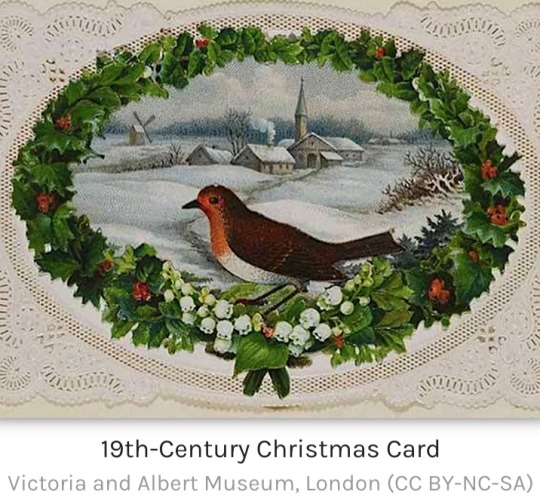
Printed Christmas cards became popular in the Victorian period (1837-1901), thanks to a combination of cheaper printing techniques and even cheaper post, with the arrival of the Penny Black postage stamp.
Coming in all shapes, sizes and materials, Christmas cards were sent in their millions to all corners of the British Empire.
Victorian illustrators created an entire mythology of exactly what we imagine a European Christmas should look like with their now-classic scenes of present-covered Christmas trees, holly, robins, sleighs, and snow-covered country lanes.
When we dream of a white Christmas, it is the festive cards of the 19th century, which are largely responsible for that evergreen imagery.
Origins

Adults have, of course, been writing letters to each other for centuries.
Even before there was an official public post system, letters were delivered in person, by servants, and via transport coaches.
There had also been prints made from the 15th century, using woodcuts or copperplate printing techniques, especially for calendars.
It was in the Victorian period that several factors conspired to make printed Christmas cards the hugely popular phenomenon they became.
The historians Antony and Peter Miall suggest in The Victorian Christmas Book that the origins of cards for the festive season lie in the classroom.
From the 18th century, schoolmasters had their pupils work on a 'Christmas Piece' in the month of December.
This work involved pupils selecting a sheet of fine paper and producing a sample of their writing, principally to show off to their parents evidence of their academic progress that year.
The paper often came with a decorated engraved border, and by the 19th century, it was popular for the pupils to draw their own decorative borders using coloured ink.
"These offerings were the forerunners of the great Victorian Christmas Card" (Miall, 37).
Other sources of inspiration for the decorative Christmas card may have been printed music sheets with decorative borders and covers, engravings commissioned to mark important anniversaries, school reward cards for hard-working pupils, fine illustrated notepaper, and the more ornate varieties of visiting cards, which were left when one called upon someone and they were not at home.
The First Christmas Card

Sir Henry Cole (1808-1882) was a civil servant who had, in 1840, reformed the British postal system by helping to create the Universal Penny Post where senders used the now-famous Penny Black postage stamps.
Cole would later become the first director of the Victoria and Albert Museum in London.
In 1843, Cole had a brilliant idea.
Not only could he save himself writing different individualised letters to his friends and family at Christmas, but he could also brighten the season with a colourful card printed for the express purpose of sending his compliments of the season.
Accordingly, Cole commissioned John Callcott Horsley (1817-1903), an artist and illustrator who was a member of the Royal Academy, to produce the first printed Christmas card.
THE FIRST CARDS WENT ON SALE TO THE PUBLIC AT THE RATHER HIGH PRICE OF ONE SHILLING PER CARD.
Horsley's design for the card, which was about the size of an ordinary visiting card (2 x 3 inches or 5 x 7.5 cm), showed different generations of the Horsley family raising a toast – presumably to the absent friend who is the recipient of the card – while flanked with scenes showing acts of charity, then, as now, an important element of the Christmas season.
On the left are people giving food to the needy, and on the right, they give clothing.
There was a border of a wood frame intertwined with ivy, and below the main image, a greeting of "A Merry Christmas and a Happy New Year to You."
There was a space along the very top and bottom of the card left blank to write a short handwritten and personalised message to the receiver.
One thousand such cards were printed and then hand-coloured. The cards went on sale to the public at the rather high price of one shilling per card.
Perhaps unsurprisingly for a new and relatively expensive idea, there were few buyers.
The Idea Catches On

Fortunately for the future of Christmas cards, the royal family was enthusiastic for all things Christmassy.
In particular, Prince Albert (1819-1861) brought German Christmas traditions to England such as the Christmas tree.
It was the younger members of the royal family who adopted the idea of sending each other handmade greeting cards both at Christmas and New Year.
Queen Victoria must have approved since she later started the trend of public figures sending 'official' Christmas cards showing more often than not themselves and their family in a festive setting.
Then, in 1844, there was another attempt at the commercial Christmas card, and this was much more successful.
Mr W. C. T. Dobson sold a printed card, which carried an illustration of the "Spirit of Christmas."
In 1848, a card printed by William Maw Edgley (1826-1916) repeated the theme of Cole's card but added scenes of general merriment and holly to the imagery.
Printers now knew they were onto a good thing. They became more and more ambitious with the designs of their cards, which were available to buy in stationers and bookshops.
From 1879, rather than pricey single cards, people could buy cheap packs of cards from tobacconists and toy shops, often imported from Germany.
This development went hand-in-hand with the new half-penny post for postcards, and so now people of all classes could send Christmas cards to their loved ones.
Victorian Christmas Card Designs

The first cards were printed on small single sheets of card, but they soon progressed to come in all shapes and sizes.
Victorian Christmas cards were typically lithographed and hand-coloured before colour-printing took over.
Many used embossed paper, sometimes with cut-out parts to resemble lace, particularly for borders.
There were even cards decorated with ribbons, tassels, real lace, tinsel, and coloured glass.
Satin, silk and brocade were also popular materials to enhance the feel of the card.
The most exotic of cards were scented, had padded additions, and incorporated pressed flowers.
One card for sale boasted it was made of no fewer than 750 separate pieces.
If one creation reflected the Victorian love of accumulating individual beautiful materials to create an even more beautiful finished article, it was the Christmas card.
With so many possible materials being used in a single card, it is no wonder that draper's shops included them in their Christmas stock.
VICTORIAN ILLUSTRATORS WERE LARGELY RESPONSIBLE FOR WHAT WE TODAY IMAGINE AS A CLASSIC 'CHRISTMAS SCENE'.
There was a great variety in the shape of cards, too, with the most popular ranging from the classic rectangular form to oval, circular, diamond, crescent, and bell-shaped cards.
Some cards were folded, others made into fan shapes, or they reflected the object they illustrated such as a post box or purse.
Cards might include moving parts or flaps that could be opened to reveal an additional scene or message.
Some had tabs that, when pulled, moved the legs and arms of a character on the front of the card or they had a disk that could be turned to show different scenes in a central window.
There were all kinds of subjects depicted on cards, many of which included humorous cartoons and everyday life, sometimes not at all related to Christmas.
Religious themes remained popular such as angels and scenes from the Nativity, but there was a definite shift away from these to more secular subjects as the Victorian era progressed.
Victorian illustrators were not without humour or fear of the risqué, nor did they miss the opportunity to trick the viewer with many cards showing two scenes depending on which direction the card was held.

Victorian illustrators were largely responsible for what we today imagine as a classic 'Christmas scene':
old churches and country lanes in the snow, sleigh rides, plump robins, glistening holly and mistletoe, and presents on or under the Christmas tree.
The popular snow scenes on Victorian Christmas cards reflected the string of harsh winters in England through the 1830s and 1840s.
White Christmases became much rarer thereafter, but the scene in people's imaginations was by then set.
In the same way, the Christmas food we imagine being eaten by Dickensian characters in the 19th century is, like in the cards, always golden roast turkeys and great steaming Christmas puddings the size of cannon balls.
Father Christmas was a popular figure on cards, but he evolved over the decades.
His appearance morphing from a Falstaffian character to a jolly old man with blue trousers and a crown of holly, and finally on to his definitive red suit with white fur trim.
Father Christmas' mode of transport also evolved to keep up with the times.
The Victorian Father Christmas used any means he could to reach people's chimneys, such as the popular bicycle of the 1880s, the new motor car of the 1890s, the ever-growing modern railway network, or even a hot air balloon.
Christmas cards had become such a staple part of the season that they now attracted the top artists to illustrate them, names like Linnie Watts, who produced a series of cards showing children, and Harry Payne, who drew soldiers, a poignant theme for those with loved ones serving far from home in the armed forces of the British Empire.
Cards changed over time as tastes changed.
For example, black backgrounds to make the main picture more striking were popular in the 1870s.
Cards reflected modern trends in art, too.
By the end of the century, art nouveau designs were appearing, with highly decorative designs and subjects inspired by the works of such fashionable artists as Alphonse Mucha (1860-1939).
With cards being sent around the world, the tradition quickly took root in other countries, notably in the United States from 1874, with the cards printed by Louis Prang (1824-1909), popularly known as the "Father of American Christmas Cards."
Collecting Christmas Cards

Beautifully made and capturing memories of the season, the Victorian middle classes became avid collectors of Christmas cards, which explains why it became common to have the year printed somewhere on the card.
Perhaps the most famous card collector was George Buday.
He even wrote a celebrated book on the history of Christmas cards, his The Story of the Christmas Card.
He donated his collection of over 3,000 cards to the Victoria and Albert Museum.
This museum today has over 15,000 Christmas cards in its archives and each Christmas, it reprints old Victorian designs so that they can, once more, just as in days of yore, carry people's Christmas wishes far and wide.
#Victorian Christmas Cards#Christmas Cards#Christmas#Victorian period#Victorian era#Penny Black postage stamp#Victorian illustrators#European Christmas#White Christmas#19th century#1800s#Sir Henry Cole#British postal system#Universal Penny Post#John Callcott Horsley#Queen Victoria#Prince Albert#Mr W. C. T. Dobson#William Maw Edgley#Father Christmas#Linnie Watts#Harry Payne#Alphonse Mucha#Louis Prang#George Buday#Victoria and Albert Museum
0 notes
Text
Discovery at West Horsley Place Could be the Bag that Contained Sir Walter Raleigh's Head

The Raleigh bag
October 29th marks the 400th anniversary of the execution of Sir Walter Raleigh. Last night at St. Mary’s, Horsley a gathering was held to celebrate the life and poetry of the great man. West Horsley Place had always played a part in the postscript of Raleigh’s story; as the residence of his son Carew and widow Elizabeth. That part however, may well be more tangible than we realised. Visitors who have been on a tour of the house since 2015 may recall being shown a red velvet bag in the drawing room. The bag was discovered after Bamber and Christina Gascoigne inherited the house in 2014.
Carew Raleigh owned the estate between 1643-1665. Contemporary accounts record that, after the head had been displayed for the assembled crowd following the execution, it was placed in a red velvet or leather bag and presented to Raleigh’s widow, Elizabeth ‘Bess’ Raleigh (1565 – 1647). Her love for her husband was such that Bess arranged for the head to be embalmed and then kept it by her side until she died 29 years later – at West Horsley Place, where she had come to live with her son and his family.

Following Bess’ death, Sir Walter’s head is understood to have been placed in a cupboard under the stairs at West Horsley Place, reappearing in 1660 when tragedy struck the family and Carew’s three young children died in an epidemic. The head was then buried alongside the children in the side chapel of neighbouring St Mary’s Church, West Horsley.
When, in 1703, the Raleigh grave was opened (for a further burial), William Nicholas – then residing at West Horsley Place – recorded in his diary the head of Sir Walter Raleigh being “dug up” with “no bones of a body to it, nor any room for any”.
As for the red bag, it receives no further mention. That is until a recent visitor to West Horsley Place – who is a respected authority on historic dress – was drawn to an old red velvet bag that had been found in the attic space when it was cleared for emergency repairs. Knowing that Bess lived at West Horsley Place and that she kept Sir Walter’s head by her side at all times, in a red velvet or leather bag, the Mary Roxburghe Trust – the charity established to rescue and restore West Horsley Place – was keen to find out whether this could be the famous bag.

An initial inspection of the bag indicates that it was made in the early 17thcentury. Its design, the material, sewing techniques and construction method are consistent with this period. The bag has now been sent for further analysis to try to establish whether it could be the long-lost bag that contained Sir Walter’s head.
Commenting, Peter Pearce, Director of the Mary Roxburghe Trust, said: “In 1665, Carew Raleigh sold the estate to Sir Edward Nicholas, First Secretary to Charles I and Charles II. It is known that some of the contents were included in the sale – including a collection of family portraits which remained part of the estate until the early 20thcentury – but, to date, we have been unable to find any further reference to the red bag. It was widely presumed that the bag had been buried with Sir Walter’s head in 1660.”
“We are greatly encouraged by the results of the initial inspection, and now look forward to finding out more. West Horsley Place dates back to the 15thcentury, and the Grade I listed manor house has passed through the hands of many illustrious owners – including Henry VIII, who enjoyed a 35 course lunch in the Stone Hall. Although this grand old house fell into disrepair in the course of the 20thcentury – it is now on the Historic England ‘At Risk’ Register – it has an extraordinary past which we look forward to unravelling and sharing with the public as we take steps towards its rescue and restoration.”
The Raleigh family’s association with Horsley and West Horsley Place particularly continues to be held dear within the village. This weekend children from the local primary school, The Raleigh School, attended a special service at St Mary’s Church to commemorate the 400thanniversary of Sir Walter’s death. There has been national and international news coverage of the story, which will spread awareness of Horsley’s special relationship to the Raleigh family and the future of West Horsley Place.

The Raleigh bag
Discovery at West Horsley Place Could be the Bag that Contained Sir Walter Raleigh’s Head was originally published on West Horsley Place
0 notes
Text
Shooting ITV'S 'Vanity Fair' at West Horsley Place
©Mammoth Screen/ITV Pictured: Martin Clunes as Sir Pitt Crawley and Olivia Cooke as Becky Sharp.
ITV’S highly anticipated adaptation of Thackeray’s Vanity Fair starts this Sunday at 9pm. Those of you who live locally to West Horsley Place may well have wondered what was being filmed here in the depths of January and we are delighted to finally lift the veil of secrecy. Vanity Fair is set to become one of the biggest TV dramas of the year- and much of the action was filmed at Grade I listed West Horsley Place.
With a stellar cast including Olivia Cooke, Tom Bateman, Johnny Flynn, Martin Clunes, Frances de la Tour, Suranne Jones and Michael Palin, West Horsley Place provides the interiors for Queen’s Crawley (Martin Clunes’ character Sir Pitt Crawley’s house) in this adaptation of Thackeray’s literary classic, which takes place during the Napoleonic Wars and follows modern heroine Becky Sharp (Olivia Cooke) as she attempts to claw her way out of poverty and scale the heights of English Society. Shooting at West Horsley Place happened over three weeks, with sets created in many rooms as well the gardens and estate. Those walking their dogs on the estate may well have been surprised to see the dashing hero of the piece (Tom Bateman) cantering his stallion across our fields! As the house is a cross section of different architectural and decorative styles it was able to provide sets for several locations in the series including Pumpernickel, Coventry Island, Vauxhall Pleasure Gardens and Queen’s Crawley. Managing a film crew and cast of that size is quite an operation; our priority was to work closely with the crew to ensure that the historic fabric of the house was completely protected during the shoot. Those who have visited West Horsley Place will recognise the Stone Hall (pictured above in a ball scene) as the dining room at Queens Crawley alongside our staircase and drawing room. One spectacular scene required the orchard to be transformed into a winter paradise of snow and ice; as the weather was not obliging a visual effects team was brought in to cover the ground with fake snow and the trees with fake frost. This was quite beautiful and was all washed away the following day as if it had never existed. The cast and crew were extremely friendly and professional showing great respect for and appreciation of their temporary new home despite our lack of any heating. The use of West Horsley Place as a location for film and TV provides essential income to fund restoration works as well as fitting into West Horsley Place’s ethos as a home for the arts.
© Mammoth Srceen/ITV Pictured: Martin Clunes as Sir Pitt Crawley, Olivia Cooke as Becky Sharp, Mathew Baynton as Bute Crawley plus supporting cast.
Commenting, Peter Pearce, Director of West Horsley Place, said:
“We were thrilled to be chosen as a location for Vanity Fair, and are very much looking forward to seeing West Horsley Place on television this autumn. Literature is all-important to the story of this great house. When Mary, Duchess of Roxburghe died, in addition to the bequest to Bamber Gascoigne was a bequest to Trinity College, Cambridge of 7,500 books held in the library at West Horsley Place collected by the Duchess’ father and grandfather and recognised as “one of the most important private collections in Britain.” Amongst the treasures to have been discovered here were first editions by Byron, Shelley, Wordsworth and Tennyson and previously unknown manuscripts of Napoleon Bonaparte, George Washington, Florence Nightingale and Charles Dickens. Now, at the Wren Library, these treasures are available to everyone. Through film, we are able to celebrate these literary links and to take a step closer to saving West Horsley Place. Our vision is that West Horsley Place will be reborn as a place for everyone to enjoy, whether as a theatre guest, visitor to the house or garden or as a student learning a craft to enjoy and practice at home. There is a great history to be discovered, and a new role for this grand old house to play in its community. It will be an entrancing future!”
Martin Clunes was at West Horsley Place every day of the shoot. In between takes he was interested to learn about the history of the place and the exciting plans for its future. He said, “West Horsley was my favourite of all of the houses we visited. Freezing but beautiful. It’s colder inside than out. But it is really pretty. And it looks real, lived in and a bit wonky.”
Shooting ITV’S ‘Vanity Fair’ at West Horsley Place was originally published on West Horsley Place
0 notes
Text
Spine-Chilling Discovery at West Horsley Place
Emergency repairs taking place at Grade I listed West Horsley Place have led to an unexpected – and rather chilling – discovery.
This week, a team of conservation experts assessing the most immediate conservation needs of the house – which has been placed on the Historic England At Risk Register – happened upon what could possibly be an ancient Executioner’s Axe among the debris in a derelict and unused room.
Although there is no record of executions having taken place at West Horsley Place, since Norman times beheading has brought about changes in ownership of the manor house and its surrounding 380 acre estate – starting in 1388 with the execution of Sir James Berners, charged with misguiding King Richard II. In 1536, King Henry VIII handed ownership of West Horsley Place to his cousin, Henry Courtenay – who is known to have entertained the King and his retinue to a 35 course lunch in the Stone Hall, only to be convicted of treason and beheaded two years later. And following the execution of her husband in 1618, Elizabeth Raleigh achieved her unlikely wish of retaining Sir Walter’s severed head in a “red leather bag” that she kept by her side at all times for the rest of her life – including the four years (1643 – 47) she spent living with her son, Carew, then the owner of West Horsley Place.
Commenting, Peter Pearce, Director of the Mary Roxburghe Trust – the charity created to rescue and restore West Horsley Place – said: “With a long line of illustrious owners – including Royalty and members of the Royal Court – it is perhaps not surprising that beheading, the punishment reserved for those of noble birth, has played its part in the history of West Horsley Place. But discovering an axe here was quite a shock! The axe has since been sent to an historic weapons expert for analysis.”
“As we take steps towards rescuing and restoring this enchanting house of significant historic and architectural interest, we look forward to unravelling more of its extraordinary past.”
Spine-Chilling Discovery at West Horsley Place was originally published on West Horsley Place
0 notes
Text
West Horsley Place to Open its Doors for Heritage Open Days on 9th and 10th September.

The Mary Roxburghe Trust is delighted to announce that, for the first time, Grade I listed West Horsley Place will be open to visitors during the 2017 Heritage Open Days festival.
On Saturday 9 and Sunday 10 September, members of the public will be able to visit the medieval manor house which stands at the centre of a 380 acre estate, separating the Surrey villages of East and West Horsley.
Dating from the 15th century, West Horsley Place is a house of significant historic and architectural importance. With remarkably surviving interiors from the 16th to the 18th century and with little 19th or 20th century intervention, Grade I listed West Horsley Place displays the evolution of architecture during this period.
The house has passed through the hands of illustrious owners including Carew Raleigh, son of Sir Walter Raleigh, and Lady Elizabeth Fitzgerald, 'Fair Geraldine' of the Earl of Surrey's famous sonnet. It has also hosted royalty- Henry VIII is known to have enjoyed a 35 course lunch in the Great Hall, and Queen Elizabeth I to have stayed on several occasions.

More recently, in 2014 historian and former presenter of University Challenge, Bamber Gascoigne, unexpectedly inherited West Horsley Place from his aunt, Mary, Duchess of Roxburghe. Decades of benign neglect had taken their toll on the house and also on the eight Grade II listed structures situated on the estate. In October 2016, West Horsley Place was placed on the English Heritage 'At Risk' Register.
To rescue and restore the house and estate, and to give them a new life and purpose, Bamber and Christina Gascoigne have generously transferred ownership of West Horsley Place to a charity, The Mary Roxburghe Trust. Once restored, West Horsley Place will become a vibrant centre for the performing and visual arts, and for the teaching of crafts.
Commenting, Peter Pearce, Director of the The Mary Roxburghe Trust said: “West Horsley Place inspires a sense of romance in everybody who visits it. The house and its estate have passed through the hands of a succession of great families through inheritance, marriage, royal favour and disfavour and in one instance following execution.”
“In each successive ownership, and each century, it has been extended, reduced, altered and rebuilt to suit the wealth - and, sometimes, lack of it - of each new owner. The result, according to Pevsner, is "… an atmosphere of happy domesticity, one of the most important achievements of British architecture. Versailles is a very long way away…".
“There is a great history to be discovered, and a new role for the grand old house to play in its community. We look forward to opening our doors to visitors for our first Heritage Open Days weekend.”

West Horsley Place is taking part in Heritage Open Days on Saturday 9 September (12pm – 4pm) and Sunday 10 September (11am – 4pm). The gardens are open for visitors to explore at their leisure but tours of the house must be pre-booked (maximum 20 people per tour, 30 minutes per tour). Tours will start on the hour and half hour. Booking opens on 21 August at 10am and closes on 7 September at 5pm.
Please book via email: [email protected]
Visitors to West Horsley Place on Saturday 9 September can also enjoy the West Horsley Village Fete. Visitors to West Horsley Place on Sunday 10 September can also book tours of The Theatre in the Woods by contacting Grange Park Opera (www.grangeparkopera.com).
For further information:
https://www.heritageopendays.org.uk/visiting/event/west-horsley-place
For further information about West Horsley Place:
www.westhorsleyplace.org
Twitter: @WHorsleyPlace
Facebook: Mary Roxburghe Trust

Access: Please note there are no toilet facilities on site. Only assistance dogs are allowed on site.
0 notes